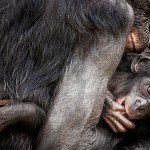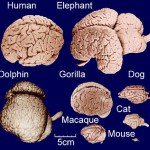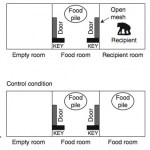bonobo
Image of bonobo from Reuters. Credit: REUTERS/KATRINA MANSON/FILES
Researchers have observed that bonobos are innately able to match a beat that was created by the research team. The bonobos demonstrated their musical skills using a special drum that was created to withstand 500 pounds of pressure, chewing, etc. The favored tempo matched the cadence of human speech, about 280 beats per minute.
The ability to keep a beat is thought to be important in developing and strengthening social bonds as well as communicating. In fact, some researchers hypothesize that Neanderthals communicated using…
Image of bonobos from www.freewallpaperspot.com
Photographer Graham McGeorge has captured remarkable images of bonobos, our closest living relative that share 98.7% of human DNA. The photos depict bonobos engaging in similar behaviors as humans, like the image above from another photographer of bonobos embracing each other. McGeorge also captured images of bonobos caring for their young as well as a bonobo who lost his hair with advancing age. Truly a must-see!
Click here to view images from this touching display.
A new piece by me today at the Scientific American Guest Blog, on some exciting news from the Jane Goodall Institute and Duke University:
Fifty years ago, in the summer of 1960 - the same year that a US satellite snapped the first photo of the Earth from space, the same year that the CERN particle accelerator became operational, the same year that the Beatles got their name - a 26-year-old Jane Goodall got on a plane in London and went for the first time to Gombe Stream Game Reserve, in Tanzania. She carried with her only a notebook and some old binoculars. Almost every day since the day…
Eric M. Johnson and I spent about 45 minutes discussing "evolutionary psychology beyond sex" last night, which you can see today on Bloggingheads "Science Saturday."
Or just watch it here:
In one of a series of stories on animal intelligence, Anderson Cooper went to see Kanzi, probably the most famous bonobo in the world, and primatologist Sue Savage-Rumbaugh, who has worked with Kanzi almost his entire life. Using his board of symbolic "lexigrams," Kanzi apparently indicated that Cooper should don a bunny suit. One wonders whether the producers asked Savage-Rumbaugh to selectively interpret Kanzi's intentions in that way, and how much footage wound up on the cutting room floor. In any case, its actually pretty funny.
The National Institutes of Health announced that by 2011 it will transfer almost two hundred chimpanzees from the Alamogordo Primate Facility in New Mexico to a lab in San Antonio, Texas, lab for use in invasive research. In 1995, the NIH announced a moratorium on the breeding of chimps in federally-supported labs, and as a result, scientists have developed alternative ways to investigate diseases. But there are still viruses, such as hepatitis C and HIV, that other species simply can't contract. This fact, some argue, makes it prudent to subject chimps to this sort of biomedical testing.…
Bonobo Week continues! I'm donating whatever proceeds I receive from my blogging shenanigans for the entire month of June to help the bonobos at Lola Ya Bonobo.
Imagine that you're wandering in the desert and you come across two magic lamps. One lamp grants three wishes. It's your standard sort of magic lamp with a genie in it. (No wishing for extra wishes, of course.) The second magic lamp is, well, a moody magic lamp. It's inconsistent. Sometimes it grants one wish, and sometimes it grants seven wishes. But the thing is, you don't know for sure whether, when you rub the lamp and genie pops…
Bonobo Week continues! I'm donating whatever proceeds I receive from my blogging shenanigans for the entire month of June to help the bonobos at Lola Ya Bonobo.
Primate researchers used to think that only humans voluntarily share their own food with others. At the time, it was a reasonable conclusion to make, since lots of studies indicated that chimps don't. But that was before anyone checked to see if bonobos were willing to share their food with others.
So Brian Hare and Suzy Kwetuenda tested pairs of the bonobos from the Lola Ya Bonobo sanctuary in DRC. In all cases, the two…
A few weeks ago I emailed Vanessa Woods and asked her pretty please if I could review her book. After reading all of the bonobo and chimpanzee papers written by Vanessa and her husband Brian Hare (both now at Duke) over the years, as well as their research on domesticated dogs and silver foxes (some of which I wrote about on the old blog), I couldn't wait to check out the book. So I was super excited to find it waiting in my department mailbox this past Wednesday morning. By Friday night, I had read the book cover to cover.
So, here's the short review: read this book.
And, okay, watch this…
Today is the big day!
And not merely because it is TGIF* day.
The theme "everything you know is sort of wrong" is familiar to readers on this blog. It is an underlying theme for much of what happens here. Every now and then that theme is manifest overtly, as in the Falsehoods posts, which are, as we speak, being revised, expanded, and reissued.
Well, starting this evening and running for an indeterminate amount of time (but probably a few weeks or so) "Everything you know is sort of wrong" is not just a phrase to keep in your head all the time as you are walking around doing stuff. It's…
Benjamin Franklin once quipped, "Where there's marriage without love there will be love without marriage." His affairs are well known in American history, however this founding father may have been stating a truth extending to evolutionary history as well.
Christopher Ryan (author of the forthcoming Sex at Dawn) offers some thoughts on the role of novelty in the sex lives of our favorite primate. He suggests that men are drawn to variety in sexual partners while women are drawn to variety in technique:
When researchers decided to look at this issue to develop a Sexual Boredom Scale, they…
Bonobos (Pan paniscus) at Frankfurt Zoo, Germany. Joachim S. Müller / Creative Commons
If you tickle a young chimp, gorilla or orang-utan, it will hoot, holler and pant in a way that would strongly remind you of human laughter. The sounds are very different - chimp laughter, for example, is breathier than ours, faster and bereft of vowel sounds ("ha" or "hee"). Listen to a recording and you wouldn't identify it as laughter - it's more like a handsaw cutting wood.
But in context, the resemblance to human laughter is uncanny. Apes make these noises during play or when tickled, and they're accompanied by distinctive open-mouthed "play faces". Darwin himself noted the laugh-like…
My student, Marta, exploded the other day.
She was sitting there in class two weeks ago and exploded. She does not know that I know this, but I noticed it happen. Since she was sitting, as usual, in the front row, and it was all in her face, the other students did not see it but I definitely did.
By "exploding" in this case I mean that her brain suddenly filled with unanswered questions, which she then started sending me in frantic emails. Many of these questions are about things we will eventually get to in class, but some are on issues that we won't touch on at all. I decided, and I…
This is the sixth of eight posts on evolutionary research to celebrate Darwin's bicentennial.
Physically, we are incredibly different from our ape cousins but genetically, it's a different story. We famously share more than 98% of our DNA with chimpanzees, our closest living relatives. Our proteins are virtually identical and our chromosomes have more or less the same structure. At the level of the nucleotide (the "letters" that build strands of DNA), little has happened during ape evolution. These letters have been changing at a considerably slower rate than in our relatives than in other…
Hollywood cavemen typically communicate with grunts and snorts, reflecting a belief that human language originated like this and slowly evolved into the rich and sophisticated tongues we use today. But researchers from Emory University, Atlanta have found evidence that the origins of human language could lie in gestures, not words. If they are right, then high-fives, V-signs and thumbs-ups could more closely reflect the beginnings of human language than conversations do.
All primates can communicate with each other through facial expressions, body postures and calls, but humans and apes are…






